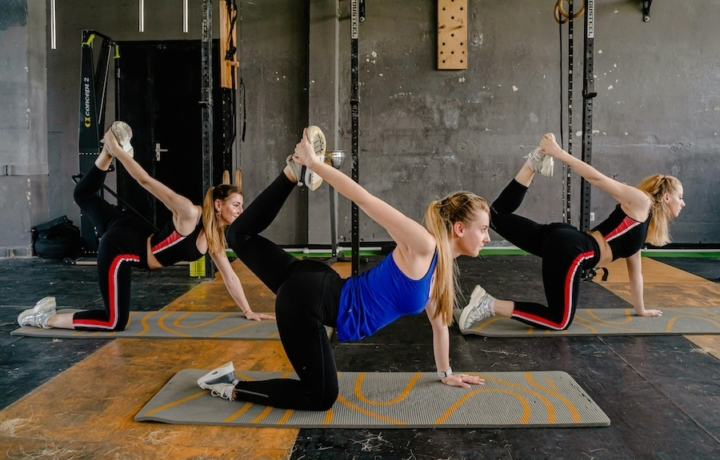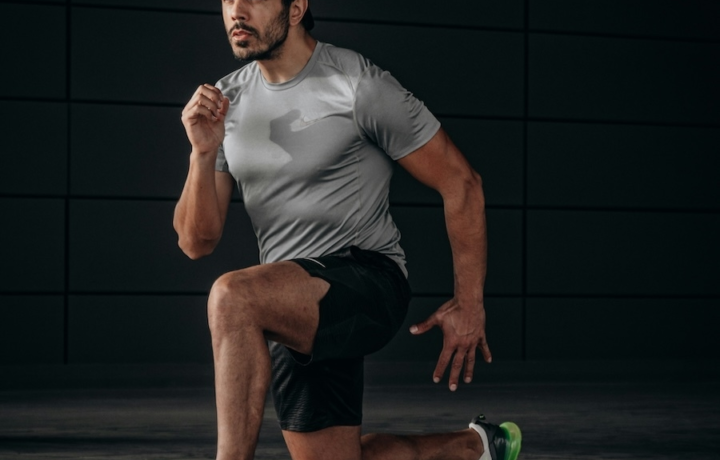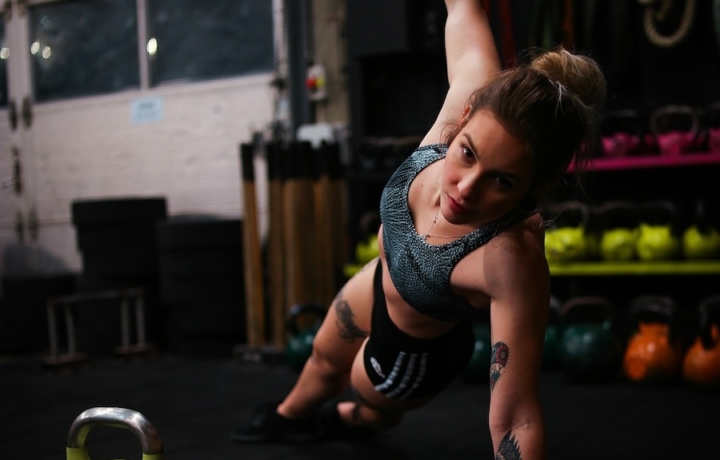Enhance recovery and mobility
Foam roller
Foam roller exercises offer targeted muscle release that addresses tension, improves blood flow, and enhances flexibility throughout your body. These techniques use controlled pressure to break up tight spots and promote faster recovery between training sessions.
Focus on
Pick your muscle groups
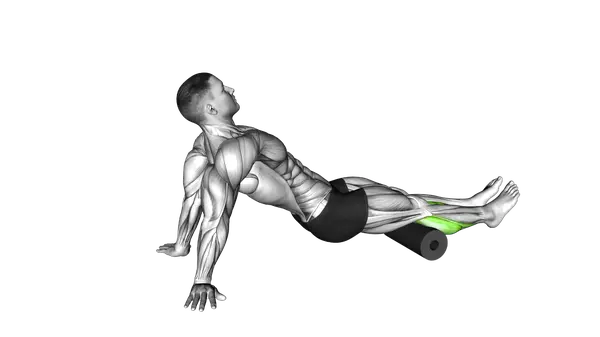
Calf Foam Roll
The calf foam roll technique stands as an essential recovery and warm-up practice for intermediate fitness enthusiasts looking to optimize their lower leg performance. This self-myofascial release method targets the gastrocnemius and soleus muscles: collectively known as the calves, which often harbor tension from daily activities and athletic pursuits. Foam rolling the calves serves multiple purposes within bodybuilding, recovery, and warm-up routines. When implemented before strength training, it increases blood flow to the muscles, enhancing their pliability and reducing the risk of strains during heavy lifting. For bodybuilders, this technique proves invaluable for breaking up adhesions that can limit muscle growth and symmetry, particularly important when developing impressive lower leg aesthetics. The beauty of calf foam rolling lies in its ability to simultaneously support both strength and endurance goals. By releasing trigger points and reducing muscular knots, athletes experience improved range of motion in the ankle joint, which translates to better performance in compound movements like squats and deadlifts. Endurance athletes benefit similarly, as consistent foam rolling helps prevent the tightness that can lead to inefficient running mechanics and premature fatigue. Regular implementation of this recovery technique addresses the unique challenges faced by the calves, which endure constant stress as weight-bearing muscles. Unlike larger muscle groups, the dense fascia surrounding the calves requires specific attention to maintain optimal function. Many fitness professionals recommend incorporating calf foam rolling into daily routines, particularly for those who experience frequent cramping or Achilles tendon issues. Whether you're focusing on building impressive calf definition or enhancing functional endurance, this maintenance technique delivers benefits that extend beyond mere comfort. By improving circulation and nerve signal transmission to these crucial muscles, calf foam rolling creates the foundation for balanced lower body development while mitigating the compensatory patterns that often lead to knee and foot problems.
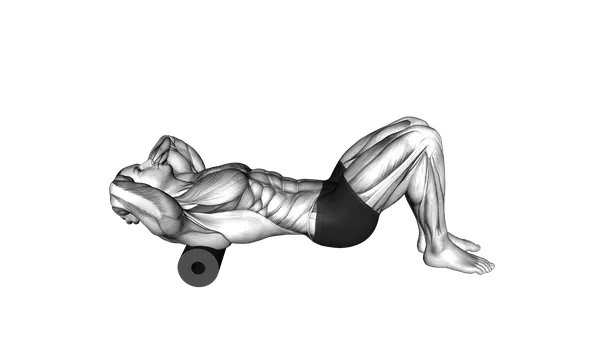
Foam Roll Upper Back
The Roll Upper Back is a gentle yet highly effective recovery technique that targets the trapezius muscles and rear deltoids, making it an excellent addition to any cool-down routine. This beginner-friendly mobility exercise helps release tension that accumulates in the upper back throughout the day, whether from desk work, training, or general stress. The rolling motion helps to improve blood flow to these areas, facilitating faster recovery and promoting better posture. As a stretching modality, this technique works by applying controlled pressure to the trapezius muscles, gradually easing tightness and enhancing flexibility in the upper thoracic region. The beauty of this exercise lies in its simplicity and accessibility – it requires minimal equipment and can be performed virtually anywhere as part of your recovery protocol. Regular implementation can lead to decreased muscle soreness and improved range of motion in your shoulders and neck. Many fitness enthusiasts underestimate the importance of targeted mobility work for the upper back, yet this area often stores significant tension, particularly for those engaged in pushing movements like bench press or overhead exercises. The Roll Upper Back serves as an excellent counterbalance, helping to maintain muscular equilibrium between the anterior and posterior chain. For beginners especially, developing this habit early in their fitness journey can prevent compensatory patterns that might otherwise lead to discomfort or injury. The rear deltoids, which play a crucial role in shoulder stability and posture, particularly benefit from this stretching technique. When incorporated into a consistent cool-down routine, this exercise can help mitigate the forward-rounded shoulder position common in our technology-driven society. Research suggests that such mobility work not only improves immediate comfort but can contribute to long-term joint health and functional movement quality. Remember that recovery isn't just an optional component of fitness – it's an essential element that allows your body to adapt and grow stronger. The Roll Upper Back represents a simple yet powerful tool in your recovery arsenal that pays dividends in both performance and everyday comfort.
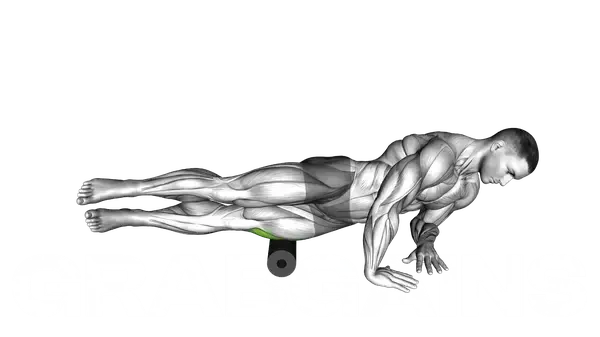
Foam Roller Tensor Fasciae Latae (TFL) Release
The Foam Roller Tensor Fasciae Latae Release is an effective way to relieve tension in the front and outer part of your hips. This small but important muscle, the tensor fasciae latae, works alongside the hip flexors and the iliotibial (IT) band to stabilize your pelvis during movement. Because it’s active in almost every lower-body exercise and even while walking or sitting, it often becomes overworked and tight. Using a foam roller helps reduce this tension, improving hip mobility and comfort during squats, running, or daily activities.When used before training, this release prepares your hips for movement by increasing blood flow and reducing stiffness in the connective tissue around the TFL and IT band. After workouts, it helps accelerate recovery by easing muscle tightness and improving circulation in the hip region. Regularly including this technique in your mobility routine can help prevent imbalances and reduce discomfort around the hips and knees.The strength of this mobility exercise lies in its simplicity. By targeting the tensor fasciae latae directly, you’re not only improving local flexibility but also promoting better movement patterns through the entire hip complex. Releasing tension in this area often eases strain on neighboring muscles such as the glutes, hamstrings, and lower back, leading to smoother, more efficient movement.Whether you’re new to foam rolling or experienced with recovery tools, the Foam Roller Tensor Fasciae Latae Release is easy to learn and self-regulated — you control the pressure and range. A few minutes of consistent practice can lead to noticeably freer hips, improved posture, and a lower risk of overuse injuries, proving that small, targeted recovery habits can make a big difference in overall performance.
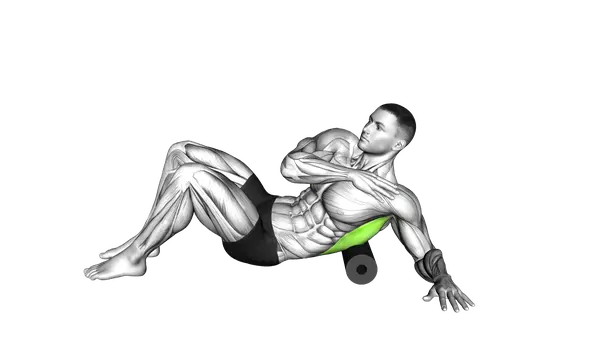
Roll Lower Back (Side) Lying On Floor
The Roll Lower Back (Side) exercise performed while lying on the floor offers a gentle yet effective way to release tension in the erector spinae muscles and engage the abdominal region. As a beginner-friendly mobility technique, this movement serves as an excellent addition to your recovery protocols, cool-down routines, or as part of a comprehensive warm-up sequence. This subtle rolling motion targets the often-neglected muscles that run alongside your spine, which can become tight and restricted from prolonged sitting or repetitive activities. The beauty of this exercise lies in its simplicity: it requires no equipment, just your body and a comfortable floor space, making it accessible regardless of your fitness environment. When incorporated into your recovery sessions, the Roll Lower Back (Side) can help alleviate discomfort and stiffness that accumulates throughout the day. The gentle movement promotes blood flow to the lower back region, potentially accelerating muscle repair and reducing post-exercise soreness.Many fitness enthusiasts find this technique particularly soothing after lower-body strength training or endurance activities. As a stretching modality, this exercise creates subtle traction along the spine while encouraging rotation through the torso, improving overall spinal mobility. The controlled movement pattern helps to reset your posture by releasing muscle tension patterns that may have developed during your daily activities or workout. What makes this exercise particularly valuable is its dual action of stretching tight muscles while simultaneously activating core stabilizers. This combination supports better movement quality and body awareness, which translates to improved performance in more complex exercises. The gentle nature of the movement also makes it appropriate for those managing minor back discomfort under proper professional guidance. Remember that consistency with mobility work often yields better results than intensity. Incorporating this Roll Lower Back (Side) technique regularly into your fitness routine can contribute to long-term spinal health and movement quality, supporting your overall athletic development and daily comfort.
Why foam rolling should be part of every fitness routine
Training goals for foam roller exercises
Regular foam rolling delivers substantial benefits that extend far beyond immediate muscle relief. These techniques improve muscle quality by breaking up tight tissue that can restrict movement and cause imbalanced movement patterns. The improved blood flow promotes faster nutrient delivery and waste removal from muscles. This speeds up recovery times between training sessions and helps you feel ready for your next workout. For injury prevention, foam roller exercises address muscle imbalances and tension patterns before they develop into more serious problems.
Techniques every athlete and fitness enthusiast should know
Best foam roller exercises for recovery and mobility
The most effective foam roller exercises target major muscle groups that tend to get tight and restricted throughout the body. Calf foam rolling addresses tension in the main calf muscles, particularly beneficial for runners and athletes who perform jumping movements. The controlled pressure helps maintain healthy muscle quality in these frequently overworked areas.
Versatile tools for personalized muscle release therapy
Equipment options for foam roller exercises
Standard foam rollers range from soft-density options perfect for beginners to firm, textured varieties that provide more intense muscle work for experienced users. High-density rollers maintain their shape better over time and offer consistent pressure application, while softer options allow gradual adaptation to the techniques. Length considerations include full-size rollers (90cm) for larger muscle groups and compact versions (30-45cm) for targeted work and travel convenience.
For optimal recovery and performance enhancement
Training plans featuring foam roller exercises
Effective use of foam roller exercises requires strategic timing and frequency based on your training goals and recovery needs. Pre-workout rolling sessions of 5-10 minutes help prepare muscles for activity by increasing temperature and improving flexibility in key movement areas. Focus on major muscle groups you'll be training, spending 30-60 seconds per area with smooth, controlled movements. Create your personal training program in the app tailored to your goals, fitness level, and schedule. Your plan will include the most effective foam roller exercises and show you exactly how to integrate them into your weekly training split.
Frequently asked questions about foam roller exercises
The optimal pressure falls in the range of productive discomfort—noticeable sensation without sharp or shooting pain. Start with your body weight distributed between the roller and the floor, adjusting by shifting more weight onto or off the roller as needed. On a scale of 1-10 discomfort, aim for 4-6 initially, allowing muscles to adapt over multiple sessions. Excessive pressure can cause protective muscle tightening and reduce effectiveness, while insufficient pressure provides minimal therapeutic benefit.
Foam roller exercises can effectively target virtually every major muscle group in your body. The most commonly addressed areas include the calves, front thighs (quads), back thighs (hamstrings), glutes, IT band, and hip flexors in the lower body. Upper body techniques focus on the lats (broad back muscles), traps (neck/shoulder muscles), rhomboids (between shoulder blades), and mid-back. Smaller tools like massage balls allow precise targeting of areas like the feet, shoulders, and neck muscles. The versatility of foam rolling makes it possible to address full-body tension patterns and movement restrictions systematically.
Most people benefit from foam rolling 3-4 times weekly as part of their regular routine, with the frequency adjusted based on training intensity and individual recovery needs. Athletes with high training volumes often incorporate brief daily sessions, while recreational fitness enthusiasts typically find every other day sufficient for maintenance. Listen to your body's response—increased muscle tension, reduced flexibility, or delayed recovery may indicate a need for more frequent rolling sessions.
Effective foam rolling typically involves 30-90 seconds per muscle group, depending on muscle tightness and individual response. For general maintenance, 30-45 seconds of smooth rolling movements works well for most areas. When addressing specific tight spots or knots, you can extend time to 60-90 seconds, allowing the muscle to release gradually. Remember that longer isn't always better—quality of technique matters more than duration spent on each area.
While foam rolling provides excellent muscle release benefits, it works best when combined with rather than replacing traditional stretching. Foam rolling addresses muscle quality and tight tissue restrictions, while stretching targets muscle length and joint flexibility through different methods. The combination approach proves most effective: use foam rolling to prepare muscles, then follow with targeted stretching for areas needing improved range of motion. This sequence maximizes the benefits of both techniques.
Integrate foam-rolling workouts into full-body and split routines

